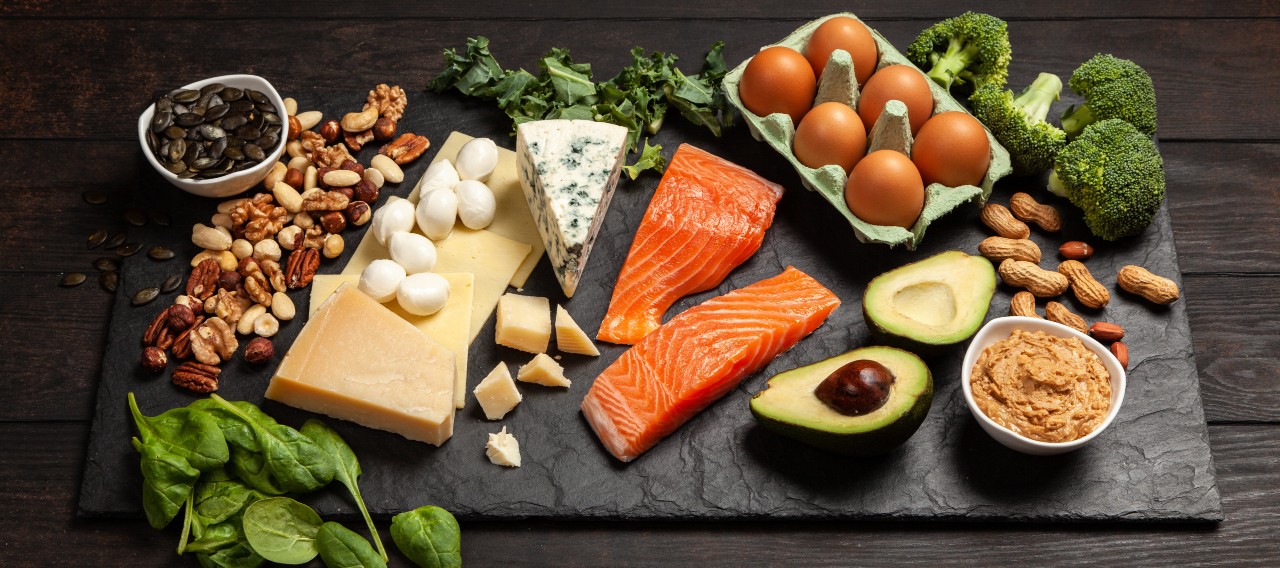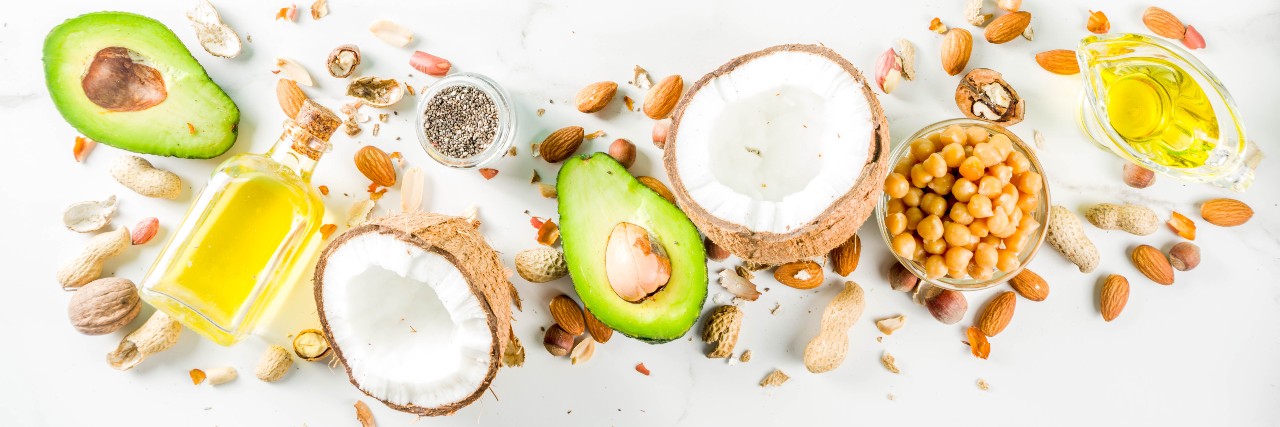The famous adage says that you are what you eat, and it couldn’t be truer in this day and age. As the world turns to fast food and supersized offerings, an increasing number of people have become more susceptible to obesity and lifestyle-triggered cardiovascular and endocrine conditions.
Still, there are individuals who choose to follow a better lifestyle, leading to the rise of various healthy food choices, including the Atkins, low-carb, and ketogenic diets.
The ketogenic – or keto – diet is a low-carb diet that involves increasing calorie intake from protein and fat and reducing one’s consumption of carbohydrates. It’s said to be beneficial for individuals who want to lose weight, gain muscles, and improve overall wellbeing.
If you’re one of the many people who are considering this type of diet, read this article to find out important things to consider before you start.
Table of Contents
1. Get your calories from homemade keto meals

An effective way to prevent the temptation of eating carb-rich foods is creating meal plans ahead of time. Of course, you’d have to make sure that the plan sticks to the keto principles of loading up on fats, proteins and low-carb ingredients.
One of the reasons why individuals choose not to embark on this diet is the perceived high cost of keto-friendly foods, which fortunately isn’t true. You don’t have to go to the grocery to buy commercially-made keto foods each time. There are easy-to-make keto meals that you can whip up at home, and in just a few clicks, you’ll find many examples of one-week ketogenic menu plans online.
2. Measure calorie intake and everything else
We don’t want you to be diet-obsessed, but it is important to be aware of what you’re eating. To make the keto diet work, measure and track everything that you consume. Any extra ingredients you add to meals – such as oil, meat, and cheese – have to be counted because these foods can contribute to gaining extra weight.
Using a food scale is the best tool to help you accurately track your calorie intake. Look for food scales that have the following features:
- A tare function that allows you to put any type of container on the scale without including it in the measured weight.
- A conversion button to switch measurements in a breeze. For instance, one that has the option to switch from grams to ounces and vice versa.
- A shutoff button that can be operated manually or automatically.
- A removable plate that’s easy to clean and keep hygienic.
3. Measure macronutrients
Besides monitoring your calorie intake, you also have to calculate your macronutrients (or macros). This is an umbrella term for carbohydrates, proteins and fat. One of the keys to keto diet success is accurate tracking of macronutrients, as all of the calories entering your body must come from these macronutrients.
To calculate your ideal daily macro targets, you first have to determine your calorie, carbohydrates, protein and fat needs.
The keto diet is designed to follow strict macronutrient goals in the following ratio:
- 70% of calories from fat
- 25% of calories from protein
- 5% of calories from carbs
The aim is to avoid excessive intake of carbohydrates, with moderate protein and significant levels of healthy fats. A keto calculator can help make managing this a lot easier.
4. Calculate Net Carbohydrates instead of Total Carbs
On a food product label, you’ll be able to find the total amount of carbohydrate in one serving. Net carbs, on the other hand, refer to digestible and impact carbs, or those that are absorbed by the body. The calculation is pretty simple; total carbohydrates minus dietary fiber equals net carbohydrates.
In a keto diet, net carbs need to be limited to about 25 to 40 grams per day, to reach he metabolic state in which your body burns fats instead of carbohydrates for energy, which is called ketosis. This can be challenging to a lot of people, because most foods contain a high amount of carbs. Healthy fats – such as coconut or avocado oil – are desirable additions to your keto diet, as they contain a low net carb value.
5. Eating too much protein can negatively impact ketosis
A common – yet not completely true – notion is that ketosis only depends on a low carb and high fat diet. There’s no mention of protein intake, although, as seen in the previous section, a goal of 25% protein intake should be included in your macronutrient goals.
Protein can actually make or break ketosis. Excessive protein intake can lead to gluconeogenesis, which converts protein to glucose, using the latter as main source of energy. This ultimately disrupts the ketosis process in your body.
A few ways to avoid eating too much protein include snacking on vegetables and fruits, and choosing the right sources of protein, such fish, poultry, and plant-based protein like tofu and nuts.
6. Don’t hold back on fats and oils

Contrary to popular belief, not all fats are bad, especially as far as the keto diet is concerned.
People who are used to having low-fat foods can find it hard to adjust to eating full-fat food products, which are required in a keto diet. With plenty of cheese, milk, and healthy oils, a keto follower may find that unrestrained amounts of fat help control a sweet tooth.
Medium chain triglycerides – or MCTs – especially those found in coconut oil, can help you achieve ketosis. MCTs are beneficial to our body, as they’re used as fuel instead of being stored as fat. They’re also helpful in maintaining brain health.
7. Don’t forget about fiber
Fiber is extremely important in digestion, detoxification and heart health, but they’re also an important consideration in the ketogenic diet. Because some fiber-rich fruits and vegetables are not considered to be keto-friendly foods, such as them apples and sweet potatoes, it’s easy to overlook them. In fact, most individuals often complain of constipation when embarking on a keto diet.
Increasing water intake and getting about 25 grams of fiber daily can help address this common problem. The good thing about fiber intake, besides aiding in digestion and promoting cardiovascular health, is that it helps manage your cravings and therefore prevents the risk of overeating.
8. Ensure you’ve achieved ketosis by measuring ketones in your body
To ensure that you’ve achieved ketosis, it’s imperative to measure the ketones in your body by using blood, urine, or breath analysis.
Ketones in your blood. This is perceived as the most effective way to measure ketones in the body. It’s no different from getting a blood sample for persons with diabetes, where a finger is pricked to check glucose levels. In fact, few blood glucose meters are capable of testing blood ketone levels, too.
Ketones in your urine. Because it is cheap and easy, most keto followers use this as a means to measure the ketone levels in their body. Unlike the blood ketone meter sampling, it is non-invasive, and the strips used to measure ketone levels are widely available.
However, this method may not be as accurate as a blood sample. A person’s hydration status plays a major role in the results, and dehydration can give a false reading of ketosis.
Ketones in your breath. Like alcohol levels, ketones levels can also be measured via a breathalyzer. It’s also a cost-effective way to quantify ketones in your body but it’s less accurate than blood analysis, since several factors impact the results, including water intake and alcohol consumption.
9. To ensure adherence, only store keto-friendly foods at home
Our ancestors didn’t have the same food options as we currently have. In ancient times, humans were hunter-gatherers and had to work hard for their meals. And as food storage was not an option, they were prone to overeating.
We still have this instinct, and the urge to overeat foods packed with calories remains strong, even if we don’t have to work too hard to hunt for food.
To avoid disruption to your diet, stock only keto-friendly foods in your house and avoid having carbohydrate-laden snacks tucked somewhere in the cupboard. Spending time out of your home is not an excuse to skip on your diet. There are plenty of restaurants that offer keto food choices and you can even ask for ingredients to be switched when making your order.
10. Intermittent fasting + Keto diet
For better results, consider combining intermittent fasting and a keto diet. Intermittent fasting involves an eating pattern done in cycles of fasting and eating. In fact, it’s not actually a type of diet, as it doesn’t dictate what you eat; rather, it instructs you when to eat your meals.
There’s no hard rule on intermittent fasting but usually, individuals try to skip eating for 12 to 16 hours – including the time you’re asleep – and eating only within a window of 8 to 12 hours.
As well as helping people to lose weight, intermittent fasting is said to potentially minimize the risks of some serious medical conditions, including cardiovascular disease, cancer, Type 2 diabetes and obesity, according to research.
Conclusion
The ketogenic diet can be a helpful tool is bringing about weight loss. There are strict rules around macronutrient distribution, and tracking is essential, but many people have been successful in reaching their goals while following the keto diet. Use the tips above to make the transition as straightforward as possible.




